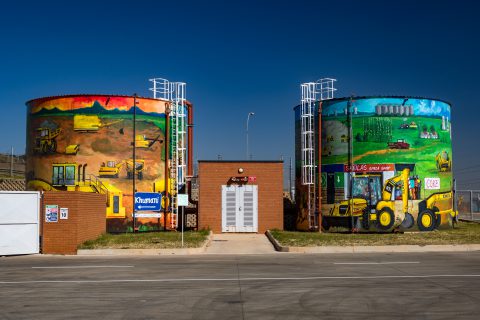Food Basket
The Unexpected Economic Star
There’s not been a lot of good news when it comes to the South African economy lately – and the short-term future certainly looks grim – but you don’t have to cast your mind too far back to remember a time when things seemed a bit cheerier. Back in September, Stats SA announced that our GDP grew for the first time in the second quarter of 2017, following two consecutive quarters of decline.
And which sector was the surprise star, showing a massive 33.6% growth quarter-on-quarter? Agriculture. Despite severe drought in the Western Cape, a bumper crop elsewhere in the country meant that farmers helped to pull South Africa out of a technical recession.
It wasn’t just the large industrial farmers that benefited from the good fortune either.
Elijah Mohapi is the chairperson of Matatiele GrainCorp, an organisation which brings together small scale farmers and collectively manages resources such as tractors and trucks. Mohapi had a bumper yellow-maize crop. “I planted 114 hectares to yellow maize and sold fourteen 44-tonne truck loads (616 tonnes),” he says. Next year Mohapi will plant maize again and also devote part of the land to soya beans for crop rotation purposes.
Xolisiwe Yolanda Potelwa is an economist at the National Agricultural Marketing Council (NAMC). Potelwa says that the boom wasn’t just for cereal producers. “There was a higher production of field crops such as maize and wheat, and horticultural products which include fruit, vegetables and cut flowers. Much of this was boosted by the good summer rainfall.”
According to the Crop Estimates Committee (CEC), the country could produce over 16.4-million tonnes of commercial maize in 2017, more than double last year’s harvest, and higher than the current record of 14.7-million tonnes produced in 1981.
Looking ahead
Not all farmers are quite so positive, however. As Stats SA points out, grain prices were high due to poor previous harvests, but have been falling ever since.
Derek Mathews, who farms near Lichtenburg, had a bonanza year for white maize, sunflowers and soya beans. But he’s not counting on repeated good luck next year. “South African maize farmers exceeded our best record ever by two-million tonnes. Unfortunately there has been an international maize glut with Brazil, Argentina and the US also producing good crops. This drove prices down. Furthermore, South Africa cannot compete against subsidised farmers in the US and Europe.”
Since maize prices are low and production costs high, Mathews is planting cotton next year.
“We are going to supply fibre for local clothing and linen,” he says, confident that there’ll be high demand for cloth in local markets. He points to a pair of jeans he purchased in the US for just $10 which were made in Lesotho.
Out of the woods?
So short term, it’s good news. But don’t expect a repeat next year.
“In spite of agricultural growth, there is low investor confidence attributed to the drought in the Western Cape province and lower global demand for white maize exports,” cautions economist Wandile Sihlobo, head of agribusiness research for the Agricultural Business Chamber (Agbiz).
“The South African Weather Service indicated that the south-western parts of the country could remain dry and warm over the foreseeable future. This does not bode well for winter crops and horticulture in the Western Cape province,” he says.
“Western Cape dam levels average lower than the corresponding period last year. Stats SA shows that the Western Cape contributes roughly 22% to total agricultural GDP.”
Beyond weather, agriculture is affected by policy. NAMC’s Potelwa argues that two policy uncertainties impinge on agriculture: water services and land restitution.
“To thrive, agriculture needs research, technology innovation and infrastructure development,” she says.
Banking on crops
There may, however, be some hope. Wessel Lemmer, senior agricultural economist at Absa Bank, adds that exports remain a potential booster for agriculture.
“The weakening exchange rate may support export income from agriculture. If ratings agencies downgrade us further and the rand weakens, this will support agriculture’s contribution to the GDP because South Africa is a net exporter of food and fibre. Being a net exporter ensures that South Africa is a low-cost food producer.”
Lemmer cites The Economist’s Big Mac Index, a way of comparing food costs globally which translates the local price of a MacDonald’s hamburger into dollars. The Big Mac, of course, is famously supposed to look and taste the same the world over.
South Africa was rated fourth lowest-cost food producer out of 56 countries in the last index, which was published when food inflation topped approximately 11.7%.
“According to the Big Mac Index, SA’s low production costs are excellent,” says Lemmer, “Given that we have an average long-term rainfall of 495mm compared to a world average exceeding 1 000mm.”
Low production costs coupled with good export potential could drive more investment in agriculture, producing more food, more income for farmers, and more jobs.
The potential is certainly there: nearly 16-million people already make a formal or informal living from agriculture in South Africa, according to 2016 statistics from the Department of Agriculture.
The National Development Plan (NDP), calls for a million new jobs in the sector by 2030. But the reality is that despite a strong first half of the year financially, the number of people employed in the agricultural sector still fell by 84 000 over the same period, according to figures from Agbiz, and fell again by 25 000 in the most recent figures for the third quarter.
To meet those targets and help pull more South Africans out of poverty through agriculture, we – like the South African economy as a whole – are going to need more than one unexpectedly good crop.






 Sign-up and receive the Business Media MAGS newsletter OR SA Mining newsletter straight to your inbox.
Sign-up and receive the Business Media MAGS newsletter OR SA Mining newsletter straight to your inbox.